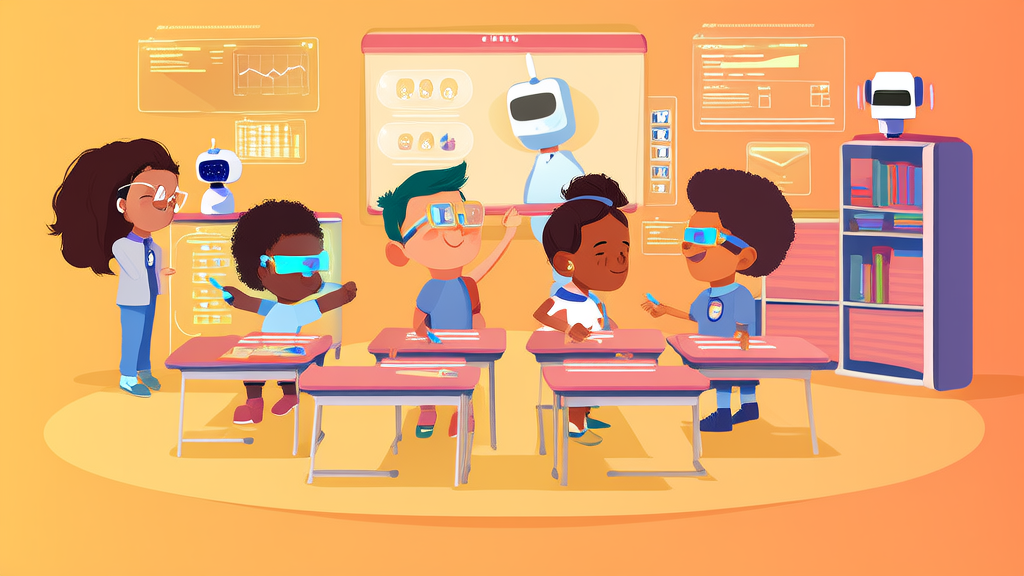3 Transformative Trends Reshaping K12 Education in 2025

Empowering the Future: Navigating K12 Education in 2025
Welcome to our exploration of the dynamic world of K12 education, where innovation and tradition blend to create a learning environment that not only prepares students for the future but also nurtures their individual growth. As we stand at the midpoint of 2025, it's an exciting time to delve into the latest teaching methodologies, child development insights, and educational technology trends that are shaping the next generation of learners. Whether you're a parent looking to support your child's education or an educator aiming to enhance your teaching practices, this post is packed with valuable information and practical tips to help you navigate and thrive in today's educational landscape.
The Evolution of Teaching Methodologies: From Rote to Real-World Learning
Traditional teaching methods, such as rote memorization and lecture-based instruction, are giving way to more engaging and effective approaches. Project-Based Learning (PBL) and Inquiry-Based Learning (IBL) have emerged as powerful tools, encouraging students to explore, question, and solve real-world problems. These methodologies not only deepen understanding but also foster critical thinking, creativity, and collaboration—skills that are essential in the 21st century.
Example: In a PBL unit on environmental science, students might be tasked with developing a plan to reduce waste in their school. This project would require them to research, collaborate, and present their findings, integrating multiple subjects and skills.
Child Development Insights: Tailoring Education to Individual Needs
Recent research in child development has highlighted the importance of personalized learning. Each student brings unique strengths, interests, and challenges to the classroom. By tailoring instruction to meet these individual needs, educators can significantly enhance learning outcomes. This approach includes differentiated instruction, which adjusts content, process, and products based on student readiness, interest, and learning profile.
Actionable Advice: Teachers can use formative assessments and one-on-one conversations to understand each student's learning style and adjust their teaching strategies accordingly. For parents, regular communication with teachers and involvement in the child's learning process can provide valuable insights and support.
Educational Technology Trends: Enhancing Engagement and Accessibility
Technology continues to play a pivotal role in K12 education, offering new ways to engage students and make learning more accessible. Tools like adaptive learning platforms, virtual reality (VR), and augmented reality (AR) are transforming the classroom experience. Adaptive learning platforms use algorithms to tailor content to each student's level, while VR and AR provide immersive experiences that bring abstract concepts to life.
Example: A history class using VR can take students on a virtual tour of ancient Rome, allowing them to explore historical sites and artifacts in a way that textbooks alone cannot achieve.
Practical Tips for Parents and Teachers: Building a Supportive Learning Environment
Creating a supportive and enriching learning environment is a shared responsibility between parents and teachers. Here are some practical tips to help both parties work together effectively:
- Regular Communication: Maintain open lines of communication to share progress, challenges, and strategies. Parent-teacher conferences, emails, and even social media groups can be effective channels.
- Encourage Curiosity: Foster a love for learning by encouraging questions and providing opportunities for exploration. Field trips, science experiments, and creative projects can all spark curiosity.
- Emphasize Well-being: Pay attention to the emotional and physical well-being of students. Encourage healthy habits, provide a safe and inclusive environment, and offer support when needed.
Success Stories and Case Studies: Inspiration from the Frontlines
Real-world examples of successful educational initiatives can inspire and guide both parents and educators. For instance, the High Tech High School in San Diego, California, has been a pioneer in PBL, demonstrating how hands-on, real-world projects can lead to deeper learning and higher engagement. Similarly, the Personalized Learning Initiative at Harvard Graduate School of Education has shown significant improvements in student achievement through tailored instruction.
Conclusion: A Call to Action
As we continue to navigate the ever-evolving landscape of K12 education, it's clear that collaboration, innovation, and a focus on individual needs are key to success. By embracing the latest teaching methodologies, staying informed about child development, leveraging educational technology, and working together, we can create a brighter future for our children. Let's commit to supporting and empowering our students, ensuring they are well-prepared to face the challenges and opportunities of tomorrow.
Join us in this journey of continuous improvement and discovery. Together, we can make a difference in the lives of our students and shape a better world for all.